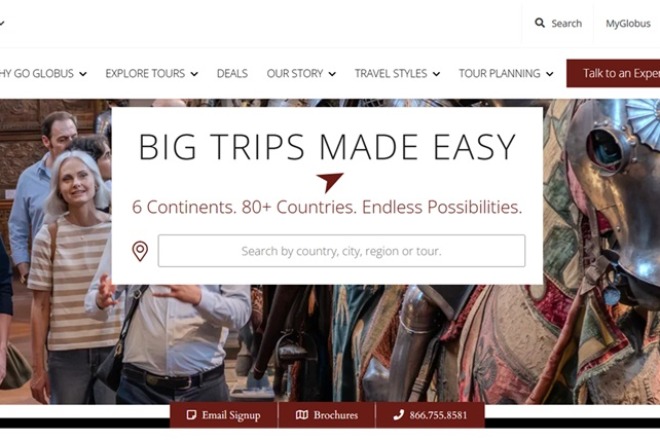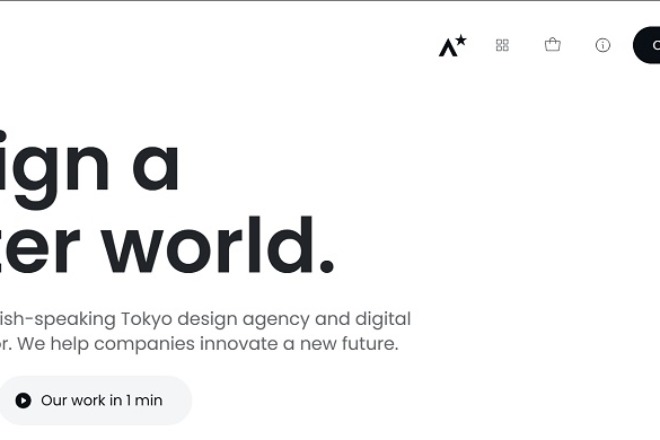Each time we start the hunt for our monthly design award, we consider the category. Many of our readers are small business owners, so we knew we wanted to feature a small business this month versus a corporation or government entity. The way we wound our way to Ali Barbour’s Cave Restaurant might interest you.
First, we do consider websites from around the world for the Designerly Award. Google often throws up ones near us, so we have to first decide on a category, then hunt for it with phrasing to pull up various countries. Obviously time is limited. Instead of looking at every site in a category in every country, we seek out the top choices or ones we’ve stumbled across on our browser adventures and begin comparing.
We decided to look to the food industry for a winner. The food industry is worth an estimated $4 trillion and will reach $6.8 trillion by 2032. As we narrowed the choices to restaurants and then small non-chain ones and finally looked in various countries, we realized we wanted something unique to feature. We began looking for a small business restaurant with an interesting hook. We considered around two dozen websites, narrowing the choices each round until we wound up with a clear winner–Ali Barbour’s Cave Restaurant in Kwale County, Kenya.
Winner: Ali Barbour’s Cave Restaurant

Ali Barbour’s Cave Restaurant made the short list because it fit the criteria of being a restaurant with a unique twist. The dining establishment is in a cave they estimate to be between 120,000 and 180,000 years old. The cave is made up of linked chambers with natural lighting from the sky or peeks of starlight at night. If traveling to the cave, you’ll head 30 kilometers south of Mombasa.
You can take a 3D tour of the restaurant on their website to get an idea of the atmosphere. If you love seafood, you’ll enjoy their menu. Some of the entrees include:
- Crab Bisque
- Oysters
- Seabass
- Octopus
They have a selection of vegetarian options, as well and a generous dessert menu.
Why We Chose the Cave Restaurant as Our Winner
Besides the fact that it is a restaurant in a cave, we felt the design of Ali Barbour’s Cave Restaurant was stellar, the mobile version intuitive and the simplicity an excellent sample of focused design.
Full Page Design
We love the look of a full page design. The hero image, which is a photo of the interior of the restaurant, fills the page and captures the user’s attention. The hero shot is enticing because it is from the ceiling of the cave looking down into the dining area.
Logo

The wordmark with a sword hovering over it is rather unique. The look likely serves as a nod to the restaurant’s name and times gone by. Several reports stated the owner–George Barbour–used inspiration from the tale of Ali Baba and the forty thieves and added his last name to the title.
We like the serif font for a formal look but then they add a script to the second half of the name to show it isn’t uptight but an enjoyable evening out. Note how the sword points toward the apostrophe, highlighting the name.
Navigation
The navigation bar for this site is simple and limited. Users can easily find the section they’d like to go to and each item is highly relevant to things potential patrons would want to know. The options include Home, About, Our Menu, Reservation, Contact and FAQs buttons.
FAQs Section
We haven’t noticed a frequently asked questions button on many restaurant sites, but this is an excellent addition that caught our interest. For someone not having dined there in the past, it answers a lot of queries they might have.
Examples of questions and answers include details about:
- Dress code
- Reservations
- Allergies
The page also addresses whether children can dine and data about group events.
Color Palette
Since the business resides in a cave, the use of natural colors works well for the design. Ali Barbour’s Cave Restaurant is set in a cavern with some natural browns and yellows built into the rock walls. Using white as the base for text allows it to pop against the background image.
As you scroll down the FAQ page, you’ll notice the background turns to solid black, the subheadings shift to a burnt orange as a nod to the cave walls and the rest of the text and lines are white or off-white.
Call to Action (CTA)
The CTA button at the top of the page reminds people they need to make a reservation. The establishment mentions there is no fee to reserve or cancel but they need to know who is coming due to the restaurant’s popularity.
They also include a text link CTA just under the hero header and opening.
Typography
The typography on this design is gorgeous. We already discussed the uniqueness of the logo and how it ties into the backstory of the company. The use of sans serif next to the serif in the logo and heading hints to users that the restaurant has history but modern fare.
Notice the heading on the home page, where the serif font is on the top line and the bottom line turns to a more italicized and script appearance. Sticking to white with the word “experience” in orange makes the term pop and lends emphasis.
Contact Information
The placement of the phone number and email across the very top of the design is a wise move that also lends trustworthiness to the brand. They also include a location marker on the top left. If you click on the icon or the text, it takes you to Google Maps so you can find your way to the cave.
What We Would Do Different
Although functional, we don’t love the mobile version of the site. They lose some of the personality by removing the hero image of the restaurant’s interior into a frame that looks like an arched window. They also use a different image than the aerial view. We would at least add an image of the dining space rather than the sign after the welcome text to showcase the uniqueness of the space and show mobile visitors they are in the right location.
While the mobile version loads quickly and gives the information needed to eat at Ali Barbour’s Cave Restaurant, it lacks the personality of the desktop version of the site. The impact is subtle but it could impact some people’s experience in booking a table or seeing if they want to dine in the cave.



